
Internationally renowned for his expertise in arts management, Michael Kaiser discusses the importance of organizational alignment around audience-building initiatives. Kaiser uses examples from his work at the Kennedy Center and Alvin Ailey American Dance Theater to illustrate and raise pointed questions for organizations to ask themselves: What are we trying to do? For whom are we doing it? How will the organization meet these goals? This lecture took place March 22, 2016, at the Philadelphia Museum of Art as part of the Building Arts Audiences Summit generously supported by The Wallace Foundation.
Michael Kaiser is the chairman of the DeVos Institute of Arts Management at the University of Maryland and president emeritus of the John F. Kennedy Center for the Performing Arts. Watch the video from this lecture below.
Transcript:
0:07 I do a lot of work with a lot of organizations, many of you in this room I’ve worked with and have had the great pleasure of working with you, particularly working in strategic planning, and I read, I would say, maybe 500 strategic plans every year from arts organizations. And I would say there’s three key goals that I read in almost every strategic plan. Number one is, we wanna increase our contributed income base, number two is we want a stronger board, and number three is we wanna build new audiences and increase our audience size. It scares me when I read these as actual strategies, to me these are wishes not strategies, but I often read them as “this is our strategy, is to increase our contributed income base”, which is of course, not a strategy. Focusing today on the third of those, which is building our audiences, I would say that despite these really remarkable work of the Wallace Foundation and of these great case studies, from my observation, most efforts at audience building don’t actually work very well, and they start with great intentions but they don’t work very well. I experienced one of these failed efforts at the Kennedy Center when I first arrived.
1:21 One of our constituent groups is the National Symphony Orchestra, and when I got to the National Symphony Orchestra, they had a goal, not unlike the Pacific Northwest Ballet. They wanted to build their younger audience, it wasn’t quite teenagers, it was really more college age. And they had a great idea for doing this. They were going to change the way they did their subscription brochure. And instead of having the classic subscription brochure for the symphony orchestra, with the musicians on the front and the conductor conducting and all kinds of nice things, they were going to do the brochure as if it was done for the Brooklyn Academy of Music. And they chopped the faces and they cut the people and they cut the words and they had it all sexier and younger, they thought.
2:07 So they sent out this brochure that was meant to be very, very avant garde, and zero people subscribed. The younger audiences were not fooled. They didn’t believe that the symphony orchestra was anything but a symphony orchestra and you can cut up the faces of the musicians but they still didn’t wanna go, and our more senior subscribers simply couldn’t read the brochure. [laughter] And what I learned from this was that you can’t do audience development simply by just doing some little marketing thing, and Will discussed organizational alignment, which is really what I will talk about mostly this morning, and it really starts from the mission of the organization.
2:53 I find that so many organizations are talking about diversifying audiences, adding younger people, doing all kinds of things to their audience, but it’s not really, really, really embedded in what their overarching goals of the organization are. And I write missions, and I always say missions have to have three key components: One, what are we trying to do? Two, where are we trying to do it? And three, who are we trying to do it for? And this “who” is what’s germane for this discussion today. And if we’re not extremely clear on who we want to work with, we’re not going to be able to build a new audience. And what was great about the examples that Will showed was it was a very clear definition of who that “who” was. And I find that a lot of our missions are wishy-washy and therefore our audience development goals are wishy-washy.
3:48 Once you’ve really been clear on who, then you can start doing the research that Will is talking about. What is the barrier to attracting this audience, what is this audience looking for, how are we going to address that? And it starts to me from really strong programming. And what I find is, a lot of organizations say we wanna build a new audience, but they’re not really willing to address whether their programming and the mix of programming addresses the audiences they’re trying to reach. And I believe that if you’re really trying to address a different audience segment, you’ve gotta do the research to figure out is this the programming that’s really speaking to them? Do we have it within our artistic framework to be looking at this programming in a more comprehensive and a more specific way for that audience. An example, I ran the Kennedy Center for 14 years. We had a very explicit desire to build the college age audience at the Kennedy Center. Not all college students, but college-age students. We did an awful lot of research and we are a multi art form cultural center so we didn’t just do opera or just do jazz, we did the whole range, and it really led us to some very specific programming choices.
5:06 We did an evening with John Legend called “What’s Happening Now”, which was a redo of Marvin Gaye’s album “What’s Happening” which was only performed once live ever in history, which was at the Kennedy Center, decades before, and we redid it with John Legend. We did a huge hip hop festival, and you may have read that the Kennedy Center has just announced their first director of hip hop at the Kennedy Center. This is a real organizational mission that finds its way into the programming. It’s not just saying we wanna have more kids of color, or we wanna have more kids. It’s very specific programming aimed at that.
5:43 That programming has to get marketed. And I break marketing into two pieces, one piece I call programmatic marketing, that’s the traditional arts marketing, that’s the brochures, the websites, the email blasts, the posters. We have to be really careful about our programmatic marketing when we’re trying to build new segments. I’ll give a really good example of it. I used to run the Alvin Ailey American Dance Theater. We had a problem in our new… This is back 25 years ago, this is 1991, ’92, ’93. We had a problem. Our audiences in New York were all white, and this was a problem. This was not Alvin’s mission, this was not the mission of the organization, and we had to find a way to diversify our audiences. And what we found was, our audiences were all white because we only advertised in the New York Times.
[laughter]
6:37 That was our programmatic marketing, and what we found was a lot of people of color read other newspapers, found and got their information in other ways. So, again, this is before the internet so I can’t go back, this is pre-internet. And what we found and what we pioneered, it seems now second nature, but it was pioneering back then, was advertising in the subway system. Desmond Richardson, one of our great dancers, whacked his leg in the air, we took a picture, we did this huge poster, that was all over the subway system of New York. For much less, by the way, than our New York Times ads, I have to say.
[laughter]
7:13 And our audiences to this day are incredibly diverse in New York, but they were not if you went back to 1991. So our programmatic marketing has to address who we’re trying to reach. But I’m obsessed in my life by a different kind of marketing, which I call institutional marketing. And by institutional marketing, I’m talking the marketing to get people to say, “I’m really excited about this organization.” Not, “Come, come, come, here’s a poster, here’s a brochure, here’s an e-mail.” But rather we do stuff that’s so interesting and so exciting you can’t miss us. And a lot of organizations in this city are doing great institutional marketing at the moment. The great New York Times article about Angel, and the ballet, and PAFA [Pennsylvania Academy of the Fine Arts] was just on CBS Sunday morning, and David Devan’s an institutional marketing machine.
[laughter]
8:03 I’d like to give an example of what I mean by institutional marketing, some of you have heard this, I’m sorry. I’ll go back to my Ailey days. When I got to Alvin Ailey we toured the world, we toured the country, we thought we were the bee’s knees. And then the author Alex Haley died, Alex Haley is the author of the book, Roots. And we got thousands of letters of condolence because people thought Alex Haley was Alvin Ailey. And that told us that as famous as we thought we were, people thought we wrote Roots, they didn’t know who we were. So we embarked on a one-year institutional marketing effort. This effort was meant to build new audience and build new donors both, and get people interested and excited and knowing who we were. What did we do? And I’ll go through it quickly. It starts in December of 1992, we got on The Phil Donahue Show, we spent an hour on The Donahue Show, Judith Jamison, our artistic director at the time spoke, our dancers danced, Phil tried to dance, which was not very successful.
[chuckle]
9:00 But it was a great hour, 18 million people saw that show. If that’s all we had done, it would have not had as much impact, you’ve gotta do it again and again and again. The next month was President Clinton’s first inauguration. I found out through a board member there was gonna be a gala the night before with, they had Michael Jackson, they had Barbara Streisand, Fleetwood Mac, Aretha Franklin, Bill Cosby, you name it. I will not go through the whole story of how we wormed our way in, but we got onto that show. On CBS, 88 million people saw the show, coming the month after Donahue now it’s starting to have potency. Two months thereafter, we did a big exhibition at the Smithsonian in Washington about our history. And that got press and that was up for three months and so that was great. In July of that year, we did a big free concert in Central Park. I found a corporation that was celebrating its 35th year of giving to the arts to fund us. It was our 35th anniversary year, so they had a reason to do that. We did the free concert, 35,000 people came. CNN came, filmed a section they ran 48 times internationally the next day over the 24-hour period.
10:06 The next month in August of ’93, Mayor Giuliani, the mayor of New York at the time named our street Alvin Ailey Place. In November of that year, two books were published about our organization. One a book of photographs, by a man named Jack Mitchell who’d been photographing Ailey virtually since its entire history. And the other, Judith Jamison’s autobiography, and then the next month, December of ’93, exactly one year after Donahue, was our 35th anniversary season in New York. We opened with a big gala, we had Jessye Norman, Al Jarreau, and Dionne Warwick singing Revelations. We had a poem by Maya Angelou, we had a new work with Anna Deavere Smith. We had co-hosts of Phylicia Rashad and Denzel Washington. It was a big deal thing. Over that year, from Donahue Show to the gala, every time you turned around in New York, there was Ailey doing something special and interesting. By the way, we were bankrupt at the time, and none of that cost us a penny. It was all paid for by others. The inauguration paid for the inaugural, Donahue paid for Donahue, etcetera, etcetera, etcetera.
11:09 So it was a free program to get people excited about Ailey, to learn that we didn’t write Roots. And in combination with our new programmatic marketing effort, this programming and this marketing built us a new, what I call, family. And by family, and I mean family, and I’m talking about a different family than our artists and our staff, I’m not talking about anyone who’s paid by the organization, they are family, too. I’m talking about a family of people, and we think of them as family, we embrace them as family. We’re thinking about our audiences, we’re thinking about our students since we ran a school, we’re thinking about volunteers, and we’re thinking about donors, and we’re thinking about board members.
12:01 These are all groups of people who provide us stuff and have no obligation to do so. And what we found was, when the programing is really strong and the institutional marketing and the programmatic marketing is really focused we can add to our family. And my experience when you go back to these three goals in most plans are add new donors, strengthen the board, and build new audiences. The real thing that most arts organizations have is too small of a potent family or too unengaged a family. And so what my approach is, is how do I build that family strength, that engagement, that potency. Because what I find is that when the family is really engaged and happy, they produce revenue for me. And very importantly when this revenue goes back into more exciting programing with a much stronger marketing effort, the family gets bigger and happier and more engaged, and this cycle can keep going and going. As Will said, very importantly, this is not a one time thing, this is an ongoing commitment, so for me it starts from the mission.
13:18 It starts from what are we trying to accomplish, where are we doing it, and particularly in this instance, who are we doing it for? It then says let’s make sure that we understand the ‘who’ really carefully. Let’s design the programing that this group of people is really gonna want. Let’s make sure that we’re marketing to that group in a truly specific, thoughtful way that reaches the group we want, and then let’s welcome them in with open arms. And this is something that I thought would be so easy, but I find is so hard for many organizations. The actual welcoming part, to actually making them feel at home, making them feel part of the organization. We experienced this at the Kennedy Center. The Kennedy Center about 17 years now started something called the Millennium Stage. The Millennium Stage is a free performance every day at six o’clock. Six o’clock you can go to Washington to see 365 days a year, the only exception is Christmas Day when we do it a little earlier in the day, four o’clock. Other than that, 365 days a year, you come to the Kennedy Center at six o’clock, you will see a high quality, free erformance.
14:27 And what was interesting to me when I got to the Kennedy Center was that every one of the people who were coming was the same people who were coming to pay for tickets. We weren’t bringing in new audiences. We were so proud of this thing, this audience development activity that we were giving free performances weren’t we great human beings, but the truth was it was people coming to the performances later who were stopping by early watching the free performance and going in. We weren’t diversifying our audience we weren’t building new audiences. It was a totally ineffective program. And what we found was the people, we did our research, Will, you’ll be happy to know, and the people who we wanted to reach didn’t feel welcomed by us. They didn’t feel they were wanted. And so we had to go through a whole approach to working in the community, not just inviting people into what is our white marble box, but actually going into community and starting projects.
15:21 We started many projects that are actually in the community. One was our National Symphony Orchestra where every year we pick a neighborhood and we spend a week in that neighborhood giving concerts, master classes, lecture demonstrations, we did a whole NSO concert in Ben’s Chili Bowl. This was a way we started to make people in the communities that we wanted to address by our Millennium Stage feel like actually we did want them, they were part of us. They were part of our family, and this welcoming in I think is a critical element, but if we do these things consistently, and if we’ve prioritized exactly who we are going to reach, who we want to reach, I think we can actually build new audiences. But we’re not gonna do it with lip service, and we’re not gonna do it with new brochures that look fun and sassy. We have to do it in a systematic way that ties the whole organization together.
16:11 This means it’s the artistic staff, it’s the executive staff, it’s the marketing people, it’s the fundraising people, it’s the people who are the security guards at the front door, it’s the entire organization who’s involved in building new audiences. It’s not a brochure, so the NSO failure taught me a lot. I think it helped my institution, but I would hope that those of you that are working to build new audiences can truly bring your whole organization together and can discuss whether you have this cycle humming, and if you do, I think you have a real chance to build new and diverse audiences.
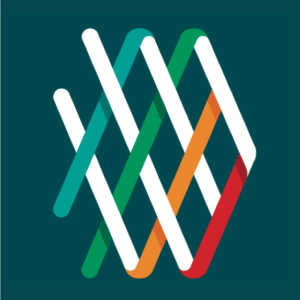




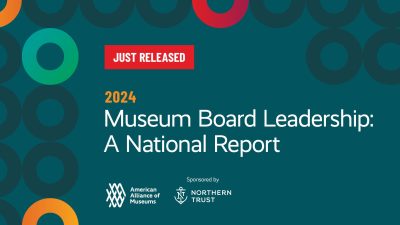
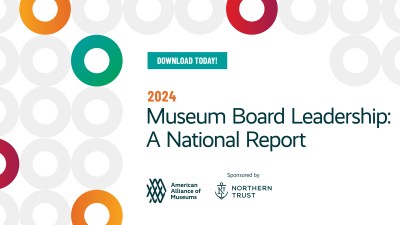
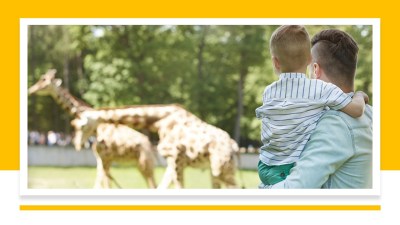
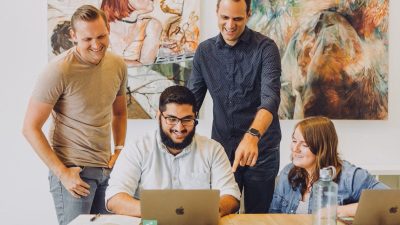
Comments